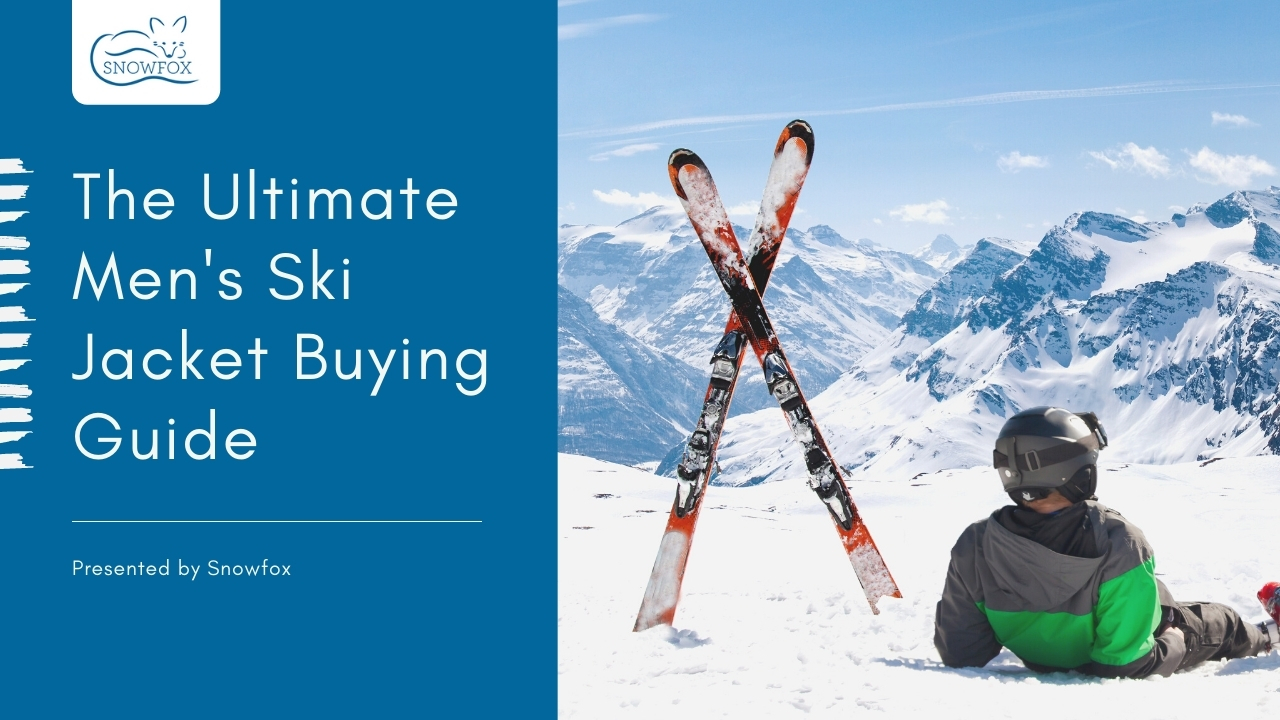The Ultimate Men's Ski Jacket Buying Guide

Men's Ski Jacket Buying Guide: How to Choose the Best Ski Jacket
Buying a ski or snowboarding jacket that will keep you comfortable, warm, and dry on the slopes is not an easy decision to make. There are different considerations for thickness, material, quality, purpose of use and design to take into account when browsing your options, and it can be overwhelming especially if this is your first time purchasing or if you are buying online without the option to try-before-you-buy. We aim to help you make a well-informed decision with our handy guide to purchasing your next ski jacket.
How to Choose the Best Men’s Ski Jacket
A winter sport like skiing requires its own set of gears. Aside from the actual skis, skiing jackets may be the most important ski gear you will need on the slopes. Before you add a snowboard jacket to your cart, you will need to familiarize yourself with the types of men’s ski jackets, as well as the different features you should look for not just for functionality but also for style, comfort, and safety.
Types of Men’s Ski Jackets
There are five basic types of men’s ski jackets. Read on to know the unique features for each type:
Shell Jackets
Shell jackets are also referred to as hard shell jackets because of its solid form. Unlike the other types of ski jackets, shell jackets are thicker and are designed to keep you dry by moving sweat away from your body. This type of jacket is great for providing adequate insulation, making it an ideal choice for its durability and weather-blocking properties. However, this type of jacket does not adjust to one’s form and may tend to restrict movement.
Soft Shell Jackets
Soft shell jackets are made of light, flexible fabric. Unlike hard shell jackets, this allows for greater movement and breathability. However, do take note that soft shell jackets are not intended for extreme conditions. This is an ideal choice though for lighter courses, and if the wearer has a tendency to sweat a lot.
Insulated Jackets
Insulated jackets feature a layer of cotton or wool lining to provide extra warmth. This type of ski jacket is perfect for skiers who want to have the warmth of layering up without having to wear multiple layers. When considering buying an insulated jacket, it is important to determine how well the fabric breathes, how well the insulation protects from wind and water, and how the insulation affects the size of the jacket.
3-in-1 Ski Jackets
A 3-in-1 ski jacket is a combination of two jackets: an outer jacket which is thicker and an inner thinner jacket. Both jackets can either be combined to form one single jacket or worn separately, as each has its own pockets, linings, and features. This is an ideal choice if you are expecting several different conditions within the season.
Technical Shell Jackets
Technical shell jackets are light and functional, with minimal design elements. Most technical shell jackets are made of abrasion-resistant base fabrics, making this type of ski jacket very durable. Technical shell jackets also have waterproof laminates, making them the best choice for high winds and blinding snowstorms, as well as mountainous backcountry terrain.
Men’s Ski Jacket Features
Once you have determined the type of jacket that is best for your upcoming ski adventure, the next step is to learn more about the different features that you need to have in your jacket:
Fit
Fit is very important. You want a form-fitting jacket that allows movement. Your ski jacket should cover your neck and torso and slightly overlap the upper thigh. Your jacket should be long enough so your belly does not show when you lift your hands above your head. The cuffs should allow to lift and move your hands without exposing your wrists.
Breathability
Breathability refers to ‘moisture wicking’. It is the extent to which body vapor and perspiration passes through the fabric and membrane inside your ski jacket. Skiing jackets with a breathability rating of 5,000 to 8,000 grams are suitable for you if you tend to use the lift instead of hiking or climbing. On the other hand, if you do a lot of high-energy riding, hiking, or running, you will need a jacket with a higher breathability rating within the 10,000- to 15,000-gram range. If you happen to be into backcountry skiing and snowboarding, running, or mountain biking, you will need a ski jacket with a breathability rating of at least 20,000 grams.
Lining
Quality lining is essential, so always check the interior of the ski jacket as well. The stitching should be tight and the inner fabric needs to be durable. Even if a particular jacket that you like has insulation built into the outer layers and the purpose of the lining is merely for aesthetics and to add an extra layer of moisture protection, quality lining is important to ensure your does not get frayed and just go to waste.
Pockets
Most ski and snowboarding jackets have pockets but they vary in functionality. If you love to hike and climb, look for technical ski jackets with pockets that are higher and easily accessible. It is also advisable to choose jackets with pocket zippers to ensure your gear is secure.
Hood
There are different types of hoods available on men’s ski jackets. A zippered connected hood is usually attached to the thicker outer jacket of a 3-in-1 jacket. Hard shell jackets, soft shell jackets, and technical shell jackets normally include a pocket hood that zips into the collar. When trying on a ski jacket, make sure you have good visibility. The hood should protect your face and ears while at the same time allowing your head and neck to move. Also, check and make sure that the hood can accommodate your helmet and other equipment.
Powder Skirt
The powder skirt is another important feature in a ski jacket. Its main function is to keep you warm by preventing powder snow from reaching your body. This is just what you need if you are planning to go skiing in the backcountry or in areas where winds have high powder content. It also decreases heat loss and allows for better movement. In some jackets, the powder skirt may be removed to take the weight off the jacket.
Pant Connectors
As the name suggests, pant connectors secure the ski jacket to the pants. Although ski pants usually have suspenders that fit under the jacket, there are ski jackets that have built-in connectors that snap onto the pants. This is most often the case for ski jackets and pants that are sold as a pair. Before you buy a ski jacket with pant connectors, check for mobility and flexibility. It is also better to choose a jacket with loop pant connectors instead of buckles, as the latter would be quite painful to fall onto. And if you are looking for a ski jacket with this specific feature, check if there is a matching pair of pants from the same manufacturer to ensure the best fit.
Cuffs
Check the cuffs of the ski jacket and make sure that they fit securely around the wrists. These should be made of flexible materials to provide comfort while at the same time tight enough to keep water and snow from getting down the sleeve.
Waterproof Zippers
Without waterproof zippers, snow or cold moisture dripping through the zipper’s material can cause your body temperature to drop. For this reason, it is crucial to choose a ski jacket with waterproof zippers, including the main zipper, pocket zippers, and other supporting zippers. When it comes to men’s ski jacket shopping, it is essential that you buy the right one for you. This will ensure that you stay warm, comfortable, and safe throughout your skiing adventure. The information in this handy guide will help you make an informed decision based on the type of skiing you plan to do, your specific skill level, your style preferences and other important factors mentioned.
When it comes to men’s ski jacket shopping, it is essential that you buy the right one for you. This will ensure that you stay warm, comfortable, and safe throughout your skiing adventure. The information in this handy guide will help you make an informed decision based on the type of skiing you plan to do, your specific skill level, your style preferences and other important factors mentioned.








